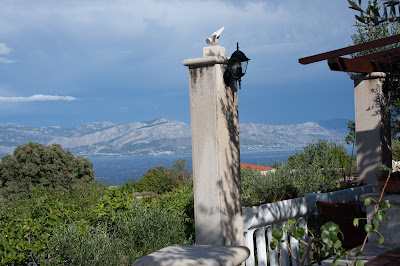A CHECKERED PAST IN REGARDS TO OCCUPATION
Home to Diocletian's Palace, built for the Roman emperor in AD 305, the city was founded as the Greek colony of Aspálathos in the 3rd or 2nd century BC. It became a prominent settlement around 650 when it succeeded the ancient capital of the Roman province of Dalmatia, Salona. After the sack of Salona by the Avars and Slavs, the fortified Palace of Diocletian was settled by Roman refugees. Split became a Byzantine city. Later it drifted into the sphere of the Republic of Venice and the Kingdom of Croatia, with the Byzantines retaining nominal suzerainty. For much of the High and Late Middle Ages, Split enjoyed autonomy as a free city of the Dalmatian city-states, caught in the middle of a struggle between Venice and the Croatian-Hungarian Kingdom for control over the Dalmatian cities. Venice eventually prevailed and during the early modern period, Split remained a Venetian city, a heavily fortified outpost surrounded by Ottoman territory. Its hinterland was won from the Ottomans in the Morean War of 1699 and in 1797 as Venice fell to Napoleon, the Treaty of Campo Formio rendered the city to the Hapsburg Monarchy. In 1805, the Peace of Pressburg added it to the Napoleonic Kingdom of Italy and in 1806 it was included in the French Empire, becoming part of the Illyrian Provinces in 1809. After being occupied in 1813, it was eventually granted to the Austrian Empire following the Congress of Vienna, where the city remained a part of the Austrian Kingdom of Dalmatia until the fall of Austria-Hungary in 1918 and the formation of Yugoslavia. In World War II, the city was annexed by Italy, then liberated by the Partisans after the Italian capitulation in 1943. It was then re-occupied by Germany, which granted it to its puppet Independent State of Croatia. The city was liberated again by the Partisans in 1944, and was included in the post-war Socialist Yugoslavia, as part of its republic of Croatia. In 1991, Croatia seceded from Yugoslavia amid the Croatian War of Independence.
 | ||
| Welcome to the city called SPLIT! |
Diocletian Palace is a UNESCO World Heritage Site built by the Roman emperor Diocletian as his retirement home between the late 3rd and the early 4th centuries using local limestone and Brac marble.
It is huge and a guide walked us around a lot more of it this time. There were many tourists but it is well worth seeing. There are hundreds of families who own apartments in the old palace. It is full of old alleyways and intrigue. It dates back to the Roman years 270 AD.
 |
| Diocletian's Palace |
Our adventures continued on a ferry ride to Brac Island where we enjoyed a family style lunch in Donji Humac overlooking the bay and affording breath taking views. We visited Jaksic gallery after lunch, going behind the scenes to see the artist's studio and myriad works of art. A late afternoon ferrry brought us back to Split for some leisure time. This was one of my favorite destinations so far.
 |
| View from the restaurant terrace on Brac Island |
 |
| Jaksic Gallery |



No comments:
Post a Comment